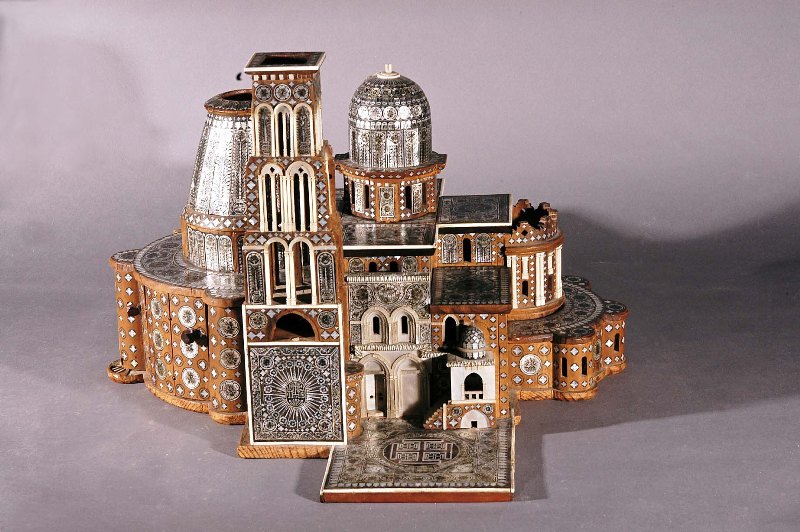
TERRA SANCTA MUSEUM: the world’s first museum on the roots of Christianity
In 2015 in the heart of the Old City of Jerusalem, the TERRA SANCTA MUSEUM – the only museum in the world dedicated to the roots of Christianity and the preservation of the Holy Places – will open: a permanent exhibit established by the Custody of the Holy Land to shed light on the history of this extraordinary land in which for millennia the destinies of many peoples living together in the places holy to the three great monotheistic religions have been mysteriously woven together.
In this special, delicate historical moment it is of fundamental importance to inform the whole world of the history of the Christian presence in the Holy Land, to encourage a greater familiarity with our roots, to contribute to the unity of the human family, and to send a message of peace throughout the world.
On Sunday the 10th of March, Fra Pierbattista Pizzaballa, Custos of the Holy Land, granted the Franciscan Media Center, the Custody’s multimedia center, the first interview about the inception of the Museum, explaining the multiple profound reasons that spurred the friars of the Custody to support and promote it.
“The Terra Santa Museum will retrace the roots of Christianity and of this land, because this country has a history in which the Christian presence is evident, like that of Judaism and Islam, but needs to be demonstrated and made better known in an organic manner. Christians, although a tiny minority, have always been and still are today a living, rich cultural presence that has made an enormous contribution to building relationships, not only with the local population, but also with so many societies around the world. This reality is only now becoming known and being shared.
“The project was born of a more general desire to invest in culture and history, but also of a deeper desire to know our past, to have a better sense of belonging, a more defined identity. In Jerusalem, this need is more clearly perceived. We need to reread and study our history so as to live in the present more serenely. If we consider that a large part of present-day phenomena – social, political, religious – has already been experienced by our parents and grandparents, we can resize the problems, put them into proper proportion, take a step back from them, so as to find the strength to build and invest in the future.
The museum will also be a source of social and economic development for the local population. Museums, archives, libraries – they are not only depositories of materials; they are also cultural institutions that have an economic consequence and create employment opportunities for the resident community, not only the Christians. But then, but that is one of the tasks that the Custody has undertaken for centuries in this area. The spaces that will house the museum at one time were the cobbler shop, the wood shop, the metal shop, etc. That reality no longer exists because times have changed, but the idea is to continue to create, to develop this link, this relationship–economically, as well – with this land.”
As the modern museum complex opens to the public, the Franciscans of the Custody intend to give prominence to the artistic, archaeological, and cultural heritage that has been preserved over the eight centuries they have been present in this land, protecting the sites where Jesus lived. For the Archaeological Museum, the guiding criterion of the exhibit will be geographical-evangelical, determined in part by the history and nature of the archaeological excavations that will be documented, but also by the interest of the public which the Museum will serve. For the Historical Museum, the criterion will be historical-thematic, highlighting and documenting the historic missions of the Custody of the Holy Land and its relations with the European States.
To the innumerable pilgrims and visitors coming from all over the world, will be proposed a flexible cultural itinerary, methodologically rigorous, and subdivided into three distinct “moments” around the Old City of Jerusalem and, in the future, extending to other sites in the Holy Land. A single exhibition complex composed of three museums (archaeological, multimedia, and historical) located on two sites a short distance from one another, near three principal destinations of pilgrims and tourists to Jerusalem (the Holy Sepulchre, the Wailing Wall, the Temple Mount).

The founding institution is the Custody of the Holy Land, a religious fraternity (Friars Minor) that has custody of the sites of Redemption, together with the Studium Biblicum Franciscanum, a scientific institution for research and academic instruction of the Holy Scriptures and archaeology of biblical lands, with permanent seat in Jerusalem.
The scientific committee is led by Eugenio Alliata, director of the Archaeological Museum of the Studium Biblicum Franciscanum. Project Head and Promoter: ATS Pro Terra Sancta.
Museological Direction: Gabriele Allevi
Architectural and Museographical Planning: Studio GTRF Tortelli e Frassoni Architetti Associati
Progress on the project can be followed on the Terra Sancta Museum website www.terrasanctamuseum.org.
On 16 April a major exhibition opened at Versailles entitled The Treasure of the Holy Sepulchre (until 14 July 2013, Maison de Chateaubriand and Château de Versailles). Most of the objects presented by the Custody of the Holy Land will return to Jerusalem for permanent exhibition in the museum.